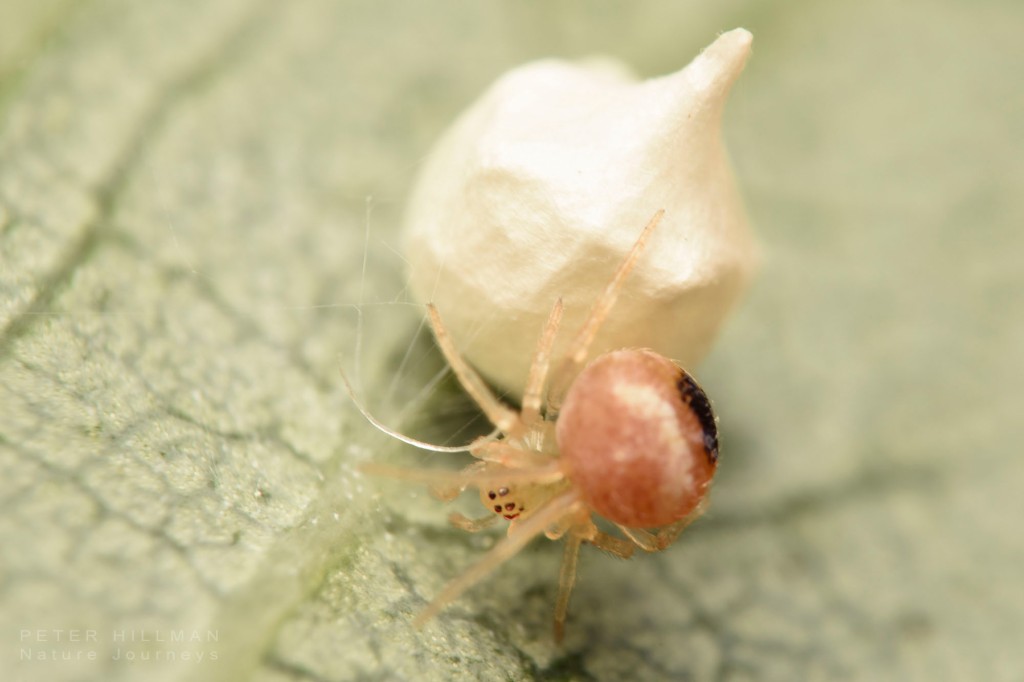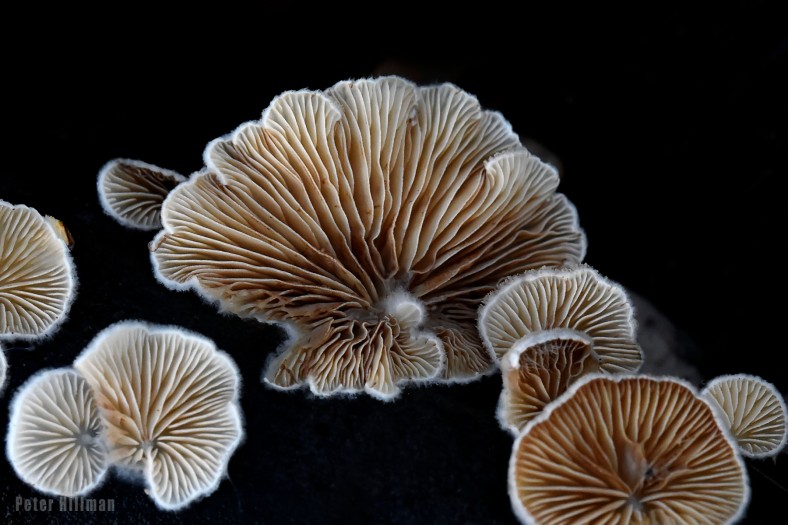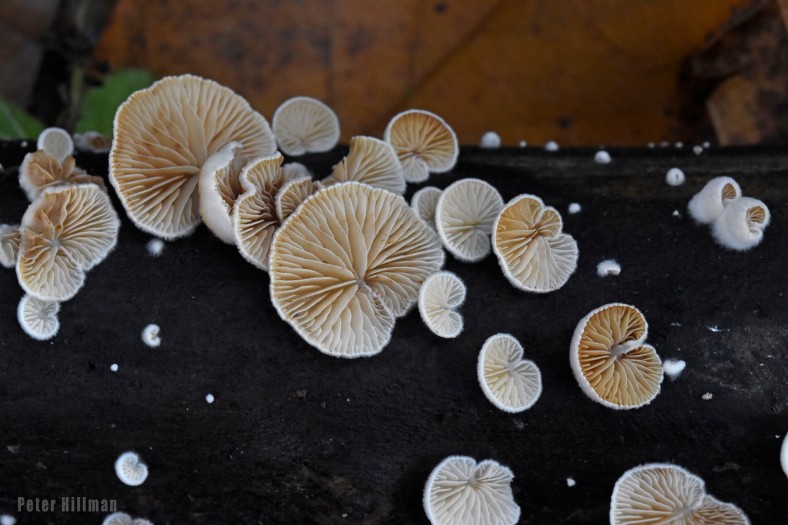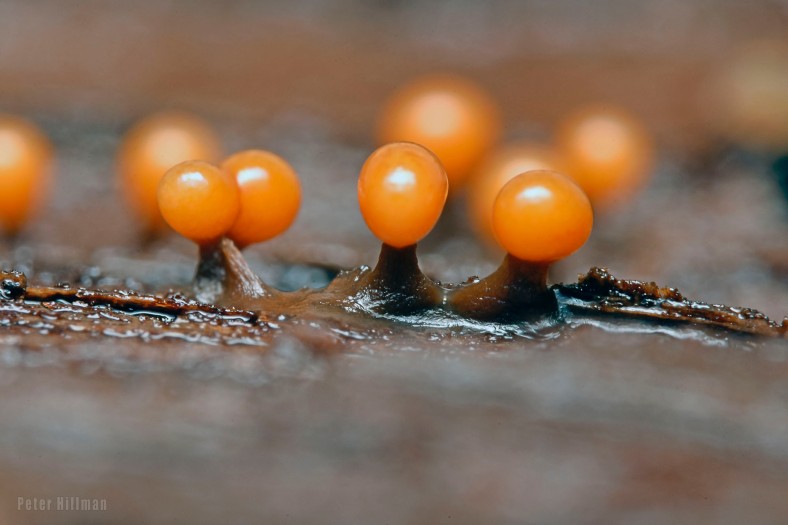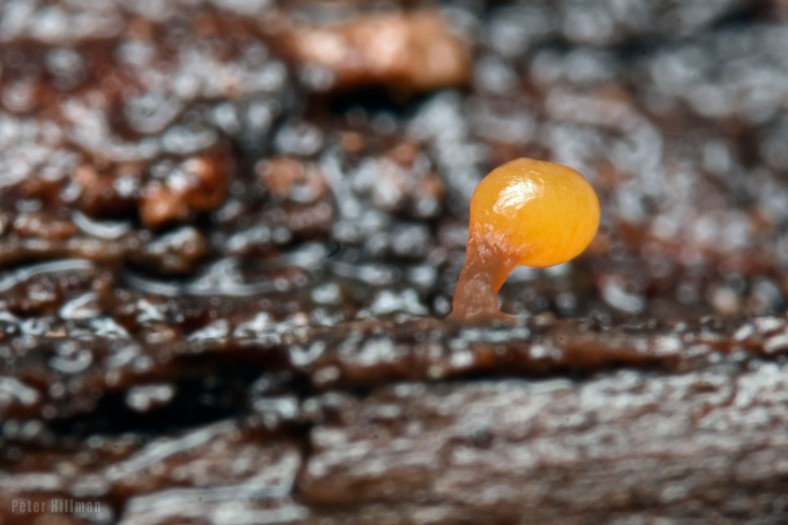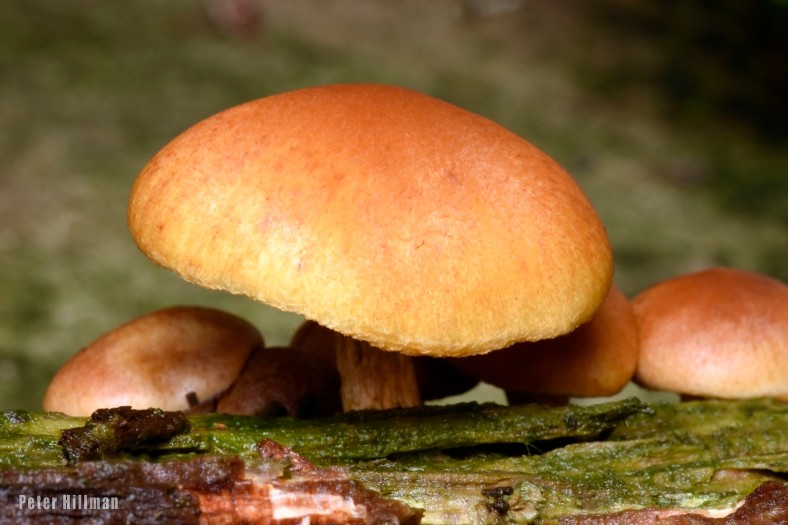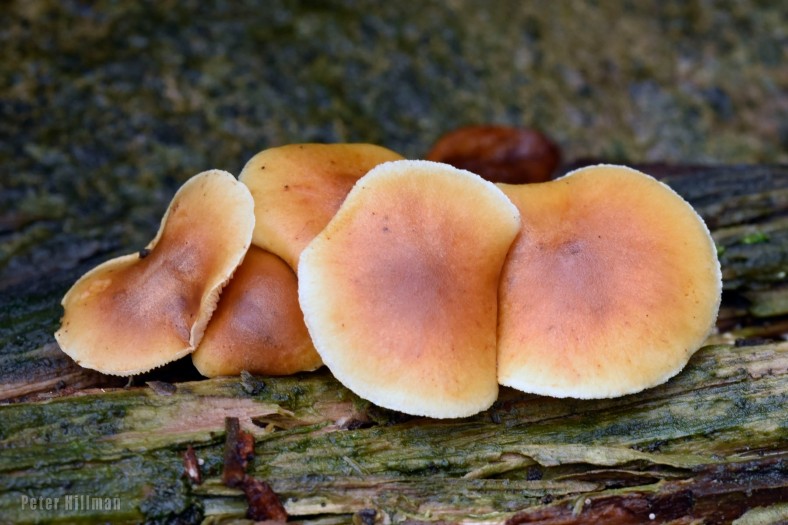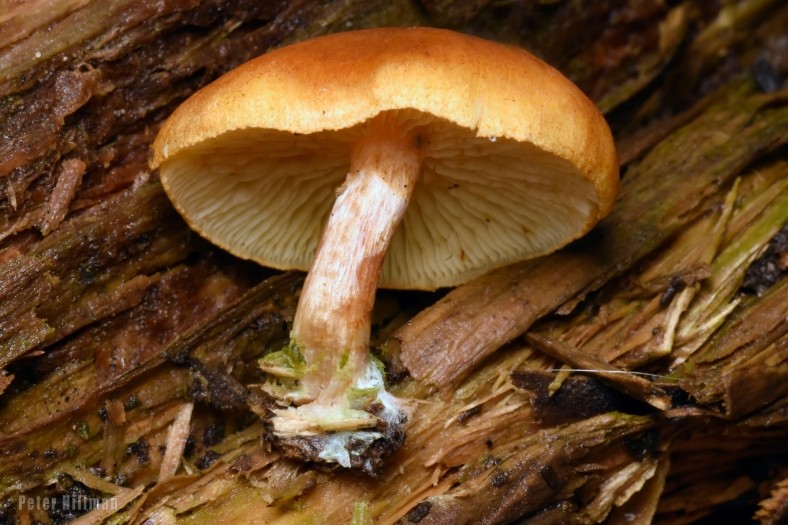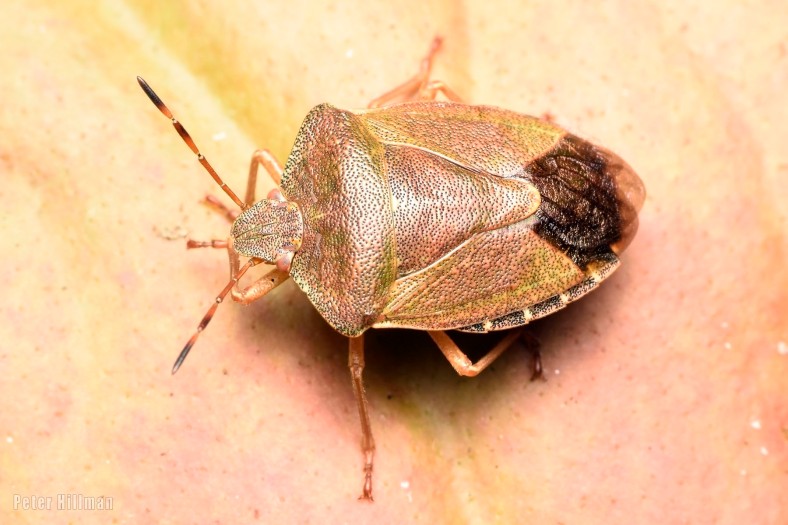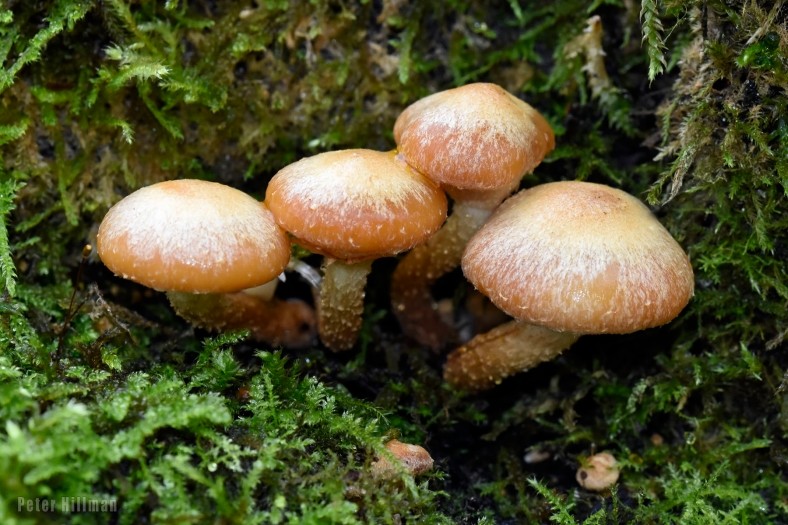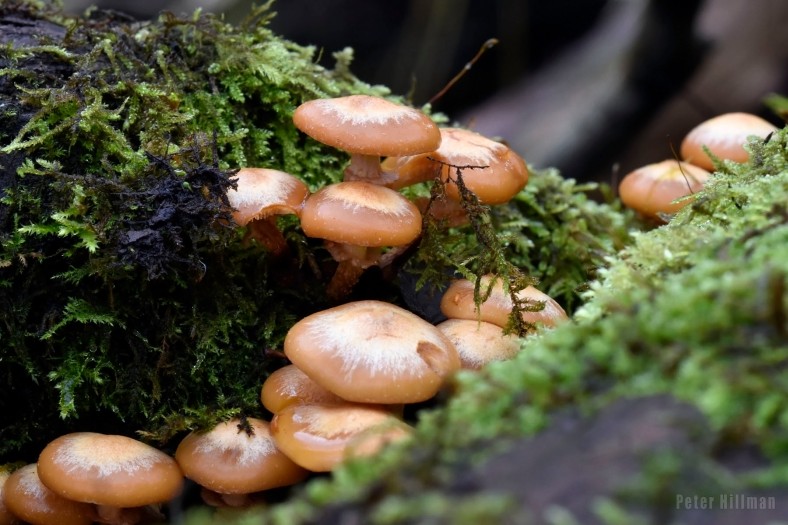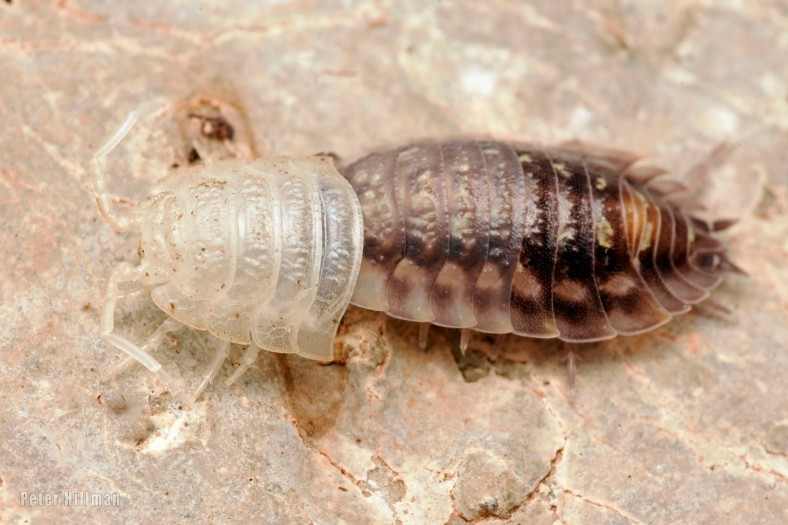Mallards (Anas platyrhynchos) are often taken for granted, but I hadn’t seen one for quite sometime. So when I came across several males and females on the local canal they were a pure delight to see as they paddled across the still waters with autumn reflections.
Tag: Nature Photography
Small Wonder
x3 images. Double click to enlarge.
Another dedicated mother looking after her eggs. This is the Cream-backed Comb-footed Spider (Neottiura bimaculata), which was a new species for me this year, discovered in the back garden.
Only a small one with a body length of around 3 mm (1/8 in). The female carries her egg-sac attached to her spinnerets.
Sputnik
The Unknown
I came across this green, wavering cushion which is around 25 mm (1 in) in diameter in my birdbath. The water is crystal clear, but here was this thing quite happily growing there. I don’t know what it is. It might be an alga of some kind, or it could be be something from outer space which hitched a ride on a meteorite. Just hope I don’t get any ‘pod people’ growing in the flowerbeds …
Little One
All Kinds of Nuts Will Do
I want That
Kentish Snail
x3 images. Double click to enlarge.
The Kentish Snail (Monacha (Monacha) cantiana) is one of the commonest snails I notice on my walks along the edge of local woodland.
The shell has a lovely mottled appearance, which can vary. It is one that can be found in gardens, too, but I have not seen any here in my own.
Netted Slug
Pergamasus
x3 images. Double click to enlarge.
I just really like some names of species (or in this case the genus) so I used it as the title for this post.
Pergamasus are verocious predatory mites of soil and leaf-litter. And unfortunately not much more info is forthcoming.
Here are three individuals I discovered .. yep, under that plant pot.
One of The Smallest
x2 images. Double click to enlarge.
This is one of the smallest mites I have come across. I discovered it by simply lifting up a small plant pot. And once disturbed they never stay still for a second, so you have to try and focus and snap them on the move. In fact, I can only see them when they move.

I have manged to get them down to genus which Eupodes. They are one of the trombid mites (Order Trombidiformes), and are so small they are usually measured in µm (micrometres). Even with the Raynox conversion lens I have had to crop these images. They are around 0.2-0.5 mm in length. Quite distinctive mites with pinkish legs and antennae, and pinkish longitudinal dorsal stripes which varies in width. Seen all year round in soil, leaf litter and amongst mosses – or even sheltering under plant pots.
Say “Hi!” To Pudibunda
x5 images. Double click to enlarge.
About a month ago my neighbour calls round (he hit 80 this year and is as fit as a fiddle), and in the palm of his hand he had this little critter. He wondered what it was (he really has an interest in wildlife), and he thought it had fell from a bush he had cut back. I identified it as the larva for the moth the Pale Tussock (Calliteara pudibunda).
Later he came around again with another he had found on his apple tree. They feed on a large variety of deciduous trees and shrubs, and I was quite amazed to discover, like paint, they come in a variety colours, from yellow, green, to orange, pink and red. Don’t think they do any shades of blue though.
Below is the familar adult, which I have featured before, which is also quite an odd yet interesting character. Who would have thought that, that would turn into that, eh?
In case you was wondering, the caterpillars where put back safe and sound to continue their feedathon.
Over 250 Moths Over 16 Years
x16 photos. Double click to enlarge
It was when I purchased my first digital camera back in 2005, a Sony Cybershot compact camera, that my love for nature and the side of the natural world, that is not always often seen but is always there to be found, became rekindled. My interest in moths – ‘moth mania’ I call it – began from a young age when I used to stay up a little at night with my older brother Steve, looking out for these nocturnal insects. In those days I used to paint and draw them, especially those with vivid patterns and colours like the Garden Tiger, which has sadly declined over the years since, and I have not yet seen one here to photograph.

So since 2005, I have photographed over 250 (and still counting with lots of past images still to go through and positively identify) species of moth and have uploaded them to this site. 250 is small fraction of the 2,500 or more species of moth to be found throughout Britain. Not all are attracted to light. Some are attracted to feromones or sugar. Some are day-fying moths, and some are rare and localised to different areas of the country.
Oddly enough, in the year 2010 I apparently did not take one single moth photo, but a year later moth mania hit me again and I photographed over 150 different species of moth!

After buying different compact cameras over the years, it was in 2014 I purchased my first DSLR camera the Nikon D3200.
2016 was the year I upgraded my camera to the Nikon D7200 (which I still use to this day) , and in 2017 it was another year the moth mania got to me. It was a very bountiful year for moths.
The thing with moths is that they can be seen all year round, even during the winter months where most other insects are hibernating.
Spotlight on The Grey Dagger Acronicta psi
There are two very similar ‘dagger’ species in Britain, the Grey Dagger (Acronicta psi) and the Dark Dagger (Acronicta tridens). The adults cannot be accurately identified visually without genital dissection and microscopic scrutiny – but I don’t like to harm them so this adult would be recorded as an aggregate species Acronicta psi/tridens. The adult is readily attracted to light, and is seen in June and August in most habitats, including woodland, hedgerows and gardens. Sadly its numbers have significantly decreased in recent decades.
The caterpillar is quite an odd thing, and on first discovery I thought it had been parasitised! But the long and prounced ‘hump’ or fleshy projection is one of its defining characteristics and which visually separtes it from the Dark Dagger (Acronicta tridens) which has a shorter ‘hump’. A visually striking moth larva with long hairs and a yellow or white dorsal strip. The orange side patches offer quite a contrast in colouration. It feeds on a large range of broad-leaved trees and shrubs, and overwinters as a pupa amongst bark, in rotten wood or in the ground.
Friday Frog
Kind of a take on Steve Gringold’s excellent Nature Photography Blog, and his wonderful ‘Frog Friday’ series. I came across this one today, a Friday, in the back garden. This is quite a large and well-marked one.
Can’t See The Wood For The Trees? … What About The Leaves?
x8 images. Double click to enlarge.
It was a fellow blogger Sconzani who runs a wonderful blog with the lovely tiltle Earthstar ~ a celebration of nature who got me looking much more closely at the leaves on not only the trees, but most anything else which has leaves.
Leafminers can be from different insect groups. Many species of Lepidoptera (moths), Diptera (trues flies), Coleoptera (beetles) and Symphyta (sawflies), have larvae which mine plants. It is the larvae of these insects which produce these mines within the leaves of plants, feeding on the plants’ tissues as part of their development cycle.
Mines tend to be restricted to a certain range of host plants and so the identification of a miner is facilitated by correctly identifying these plants. The shape of the mines (gallery or blotch) and the patterns of the droppings (frass), besides characteristics of the larvae and pupae, can be diagnostic. Even the location of where the egg is layed on a leaf can be diagnostic and can help to separate similar species.
The Holly Leaf Miner (above image) forms quite a wide gallery on Holly (Ilex), and is only one of two holly leaf miners to be found in the wholes of Europe, and the only one to be found in the UK. The adult female Agromyzid fly Phytomyza ilicis lays its eggs in May or June at the base of the petiole of a young leaf (on the underside). The oviposition scars can be seen on the midrib on the underside of the leaf. The larva initially feeds in the mid-rib, later producing the characteristic irregular upper surface linear-blotch.
The fly Phytoliriomyza melampyga mines the leaves of Impatiens species (Balsams). Here it was found on Himalayan Balsam (Impatiens glandulifera), an invasive plant species here.
The larva of the micro-moth the Apple Leaf-miner (Lyonetia clerkella) feeds on a variety of Rosaceae (rose family) and Betula (birch) trees in small, long and winding leafmines.
The larva of the sawfly Profenusa pygmaea mine the leaves of various species of oak (Quercus) creating a large blister or blotch mine on the upper surface.
So next time you are out in the woods … or even in the park or garden … take a closer look at those leaves and see what squiggly patterns or blotches have been created within them.
The Dangers of Courtship For The Male Garden Spider Araneus diadematus
x7 images. Double click to enlarge.
It’s amazing what you see sometimes as you travel through your own backyard. I spied this female Araneus diadematus some days ago. She is really quite a big individual and had made a large orbweb stretched between a plant pot and some shrubbery. Here she has a good meal ready to go in the shape of a Hawthorn Shieldbug .. in fact, to my crazy mind, she looks like a band member ready to knock out a tune on it.
The next day, on the late afternoon, I spotted the handsome male Araneus diadematus apparenty repairing and tidying her web for her at a distance. But he had also spun a strong silken quick release safety line … more on that later.
In the above image we can see how large the female is compared to the male. She looks rather intimidating … and she is. I watched as the male Araneus diadematus tentatively approached her along the web, getting a little closer, the female closing the gap … and the male backing off from time to time keeping a little distance between them. He was testing the waters, and so he should. Female Araneus diadematus practices sexual cannibalism before and after insemination. One thing in his favour is the large food package she already has nicely wrapped up … but he certainly didn’t want to be seconds.
Eventually they closed the gap but he was still very sheepish and kept darting back … and on a couple of occasions when he must have read the situation as potentially dangerous rather than amorous he used his pre-made quick release safety line to swing back a good distance out of harms way. They must have been playing this cat and mouse courtship game for a couple of hours … and I don’t know what the outcome was in the end for the male. The next day had seen overnight rain which had damaged some of the web, but the female was found sheltering under a leaf. The male was nowhere to be seen. He was either inside her as last nights late supper … or he had gone off in search of another mate with an extra swagger to his gait.
Sexual cannibalism in spiders is a long-standing evolutionary paradox because it persists despite extreme costs for the victim, usually the male. Several adaptive and nonadaptive hypotheses have been proposed to explain this phenomenon, but empirical studies are still scarce and results are inconclusive.
A Moth That Mimics A Leaf.
x2 images. Double click to enlarge.
This is Angle Shades (Phlogophora meticulosa), and its is quite an extraordinary looking moth. Very distinctively shaped and patterned which make it resemble a withered leaf. It rests with its wings folded in an unusual fashion.
It is often seen during the day resting on walls, fences and foliage.
A Good Relationship
x3 images. Double click to enlarge.
Introducing the Ant Woodlouse Platyarthrus hoffmannseggii. Growing up to a length of 5 mm (1/4 in), it is blind and spends all of its life underground. It is always nearly found in association with ants within their nests where they have a good relationship. The woodlouse is tolerated and is not under any threat, most likely because it acts as a house keeper for the ants, feeding on their ant droppings hence keeping the nest clean.
A fairly slow-moving woodlouse, and the darkish stripe along the back is the contents of the gut showing through the cuticle. It is widespread across southern Britain, less so and becoming much rarer further north.
What Lies Under A Piece of Bark
x5 images. Double click to enlarge.
Lifting a piece of bark in a garden border, the last thing I expected to find was a delightful Smooth Newt (Lissotriton vulgaris).
It remained where it was, frozen to the spot. I hadn’t got my camera, so I gently placed the bark back and went into the house to get my equipment. Thankfully, when I got back and lifted the bark a second time, he was still there.
It is the first time I have seen a Smooth Newt here, in fact, surpisingly, the first time since I was a boy back home in the 1970s., so this was quite an exciting find for me.
I found him at the opposite end of the garden to where my pond is located, but after their spring mating sessions in ponds they live the rest of the year away from water, hiding under rocks and logs in woodland, hedgerows or gardens, venturing out only at night to hunt inveretbrates.
The Smooth Newt is one of three native species to be found in the UK, and it is the commonest and the most frequently encountered of them all.
The 600
x3 images. Double click to enlarge.
This is the 600th insect species I have uploaded on Nature Journeys, and what a bright and beautiful one it is, too.
It is a fly, a hoverfly called Epistrophe grossulariae. It prefers woodland edges, meadows and wetalnd areas where it will feed on the nectar from flowers. The larvae are aphidophagous – feeding on aphids.
Something Strange In The Bushes
x4 images. Double click to enlarge.

I have a Hawthorn bush growing in the back garden, and I discovered these strange things stuck to the branches. They are around 5-7 mm (1/4 inch) long.

As you can see they are brown and wrinkly with what looks like a cotton wool ball tucked at the back of them. They were something I had never come across before.

I had my suspisions they were some kind of scale insect. Scale insects belong to the order of insects called Hemiptera – the true bugs, which include the shieldbugs and the likes. I discovered these belong to a family called Coccidae – the soft scales.

These strange insects are called the Woolly Vine Scale Insect (Pulvinaria vitis). They have a a soft shell of protection attached to the body which helps prevents them from dying out and gives them protection from potential predators like parasites. A cottony wax coating is produced that is used to conceal the eggs. Once these insects are attached to a tree they become immobile, feeding on the sap of the host plant. The images show females with cottony ovisacs. The smaller males (1.5 mm long), which possess wings, are rarely seen.
Stag’s Horn Fungus
Mycoacia fuscoatra

This is an irregular resupinate fungus forming large spreading patches which is tightly attached to the substrate with waxy flesh which turns dark brown when dry and becomes brittle. I have shown close views in the first two images to show the fascinating structure of this fungi.
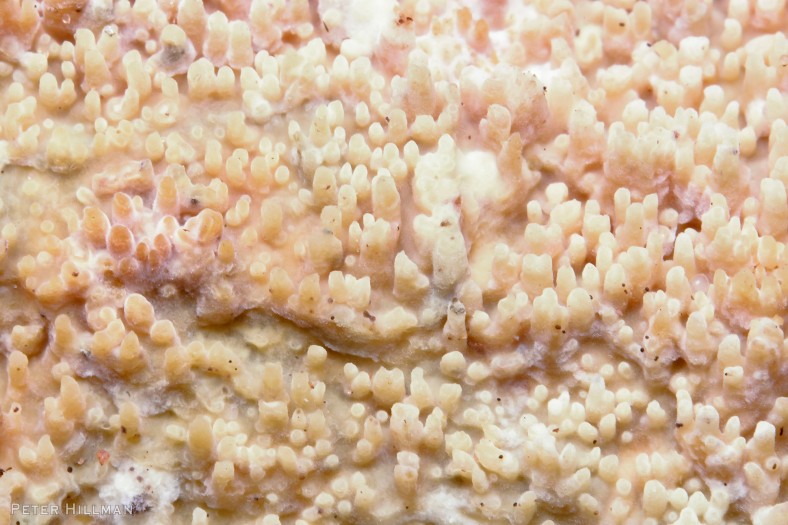
It is uncommon, and it is usually found on the the underside of fallen logs and branches of deciduous trees.

Clustered Bonnet #2

The Clustered Bonnet (Mycena inclinata) discovered on a rotting tree stump. Despite the potential lighting difficulties of photographing fungi … at least they don’t try and run away, and they don’t hardly move in the wind … I don’t really like to use flash on mushrooms as I much prefer the natural light. In manual mode, which is my preference, I may have to up the ISO a little which sometimes can risk noise creeping into the image, or drop down on the shutter speed, which may introduce camera shake hand held. Altering the aperture to suit the best situation also helps.Like all things in photography the challenge is to take control of the available light, and to find balance somewhere in between.
Yup … More Slime Forecast …

Not Ghostbusters slime … but Mycetozoa – slime moulds, more discovered this time in local woods. This species looks to be the same as in the previous post Trichia botrytis. Like all slime moulds, they creep across a surface very slowly devouring food until they run out, and when they run out they will release their spores.

These appear to be in the early stages of ripening. Each Sporocarp – the bright fruiting bodies you see – are around 5 mm (1/4 in) tall and 0.8 mm (3/64 in) in diameter, so they can be easily missed out in the field unless you keep an eye out for them. These were found on the underside of fallen bark on the ground.
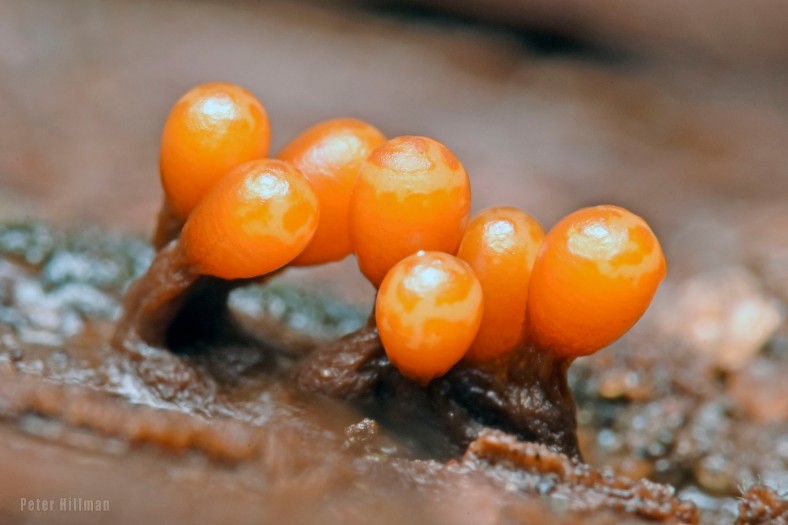
Variable Oysterling Crepidotus variabilis
More Slime
Getting Even Closer

This is Dicyrtomina saundersi, a springtail, and boy do they jump if they feel threatened. This is an uncropped image. I have experimented with extension tubes for the first time ever this morning, and have found using the 36 mm tube in combination with my Raynox 250 they work pretty well. Normally I would have had to crop the image some to get closer.
The original image was 6000 x 4000 pixels but I have reduced it down to 2000 x 1333 pixels for internet use and have reduced the quality a little to bring down the file size.
Oh, and yes, I probably snapped this individual at an inopportune moment … but there you go in the world of photography.
Shaggy Inkcap Coprinus comatus

Also called the Lawyer’s Wig, this can be quite a large and impressive mushroom with a tall cap. When it opens up the cap and white gills gradually blacken and dissolve into black ink from the edge upwards to release its spores. Eventually the cap will melt away completely until only the stem remains.
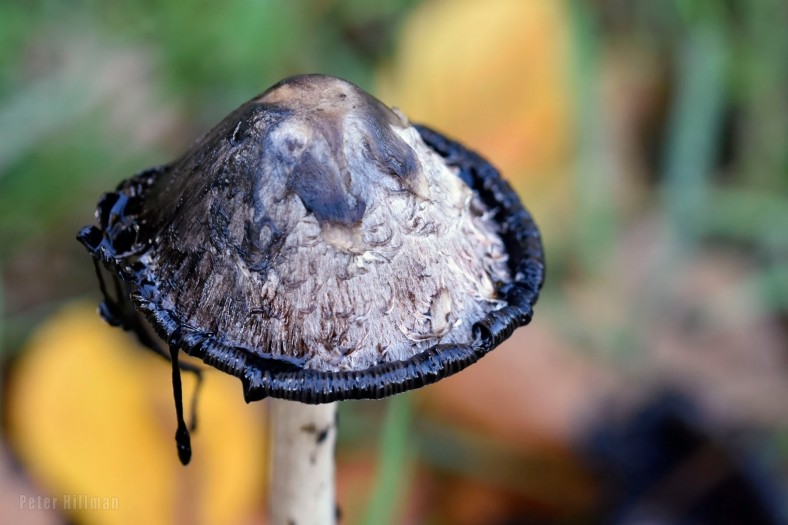
Seen late summer to autumn, it is found solitary or in groups on grass, soil, and waste areas, especially where the ground has been disturbed.

Common Rustgill Gymnopilus penetrans
Katiannidae genus nov.1. sp. nov.2

You may be wondering what an earth this blog title means? Well, coincidently for me, this is another of those species which has yet to be given a proper name!

This is a globular springtail of around 1.5-2 mm (around 5/64 in). It has to be the prettiest and perhaps the cutest I have seen, and has now become my favourite.
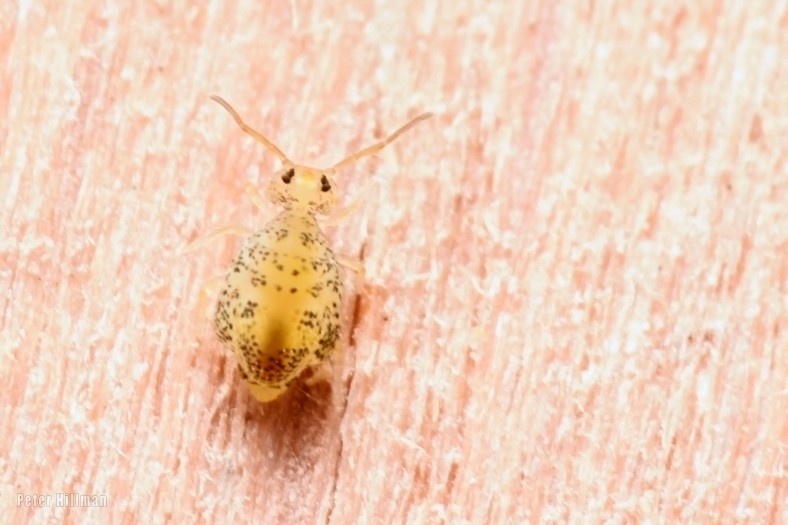
It is believed to have been imported from Australasia and associated with the horticultural trade. That is all the information I have been able to gain so far regarding its origin. There is no knowing its status here in the UK, either.

It appears to be fairly variable, and is seen in gardens and parks, and probably allotments and garden centres. I believe the bottom image may be a juvenile as it was smaller than the individuals above.

In Autumn Colours
Sheathed Woodtuft Kuehneromyces mutabilis
Time For A Change
Pill Millipede Glomeris marginata

This species of millipede looks rather similar to a woodlouse, and this can often lead to some confusion in identification. Its common name refers to its habit of rolling into a tight ball to protect itself from predation and to prevent itself from drying out. It is greyish-brown to blackish in colour, with about 11 tight-fitting calcareous plates running down its body. It has numerous legs.

It feeds on various rotting plant material, and helps to recycle soil nutrients.

A common and widespread species throughout Britain, except the far north where it is absent

Phalangium opilio

This is another new species for the garden, and they all appear to like my shed wall for some reason. This is a lovely female.

A long-legged harvestman with an indistinct and variable light gray or brown body pattern. The saddle has one or two restrictions along its length giving it a waisted, or double-waisted appearance. Males have a large spur or horn projecting from the anterior surface of the first cheliceral segment. They also tend to have long, thin pedipalps relative to those of other harvestmen and usually are blacker in colouration than the females.

Found in well vegetated areas such as gardens, brownfield sites, grassland and open woodland. Seen on walls and vegetation.

White-legged Snake Millipede Tachypodoiulus niger

Quite a large dark millipede with a length of up to 60 mm (about 2/34 in). They take 2 to 3 years to mature, and can live for several years after first mating.

It can be seen all year round, and is found in gardens, woodlands and anywhere with rocks or rotting trees under which it can hide. Very common and widespread throughout Britain.
Leiobunum sp. A

This caused some excitement the other day in the Harvestmen group I am a part of. Note that the ‘A’ at the end in the title is not a typo, but is there because scientists have yet to name it! It was first discovered in Europe in the Netherlands back in 2004, and then in the UK in Worksop, Nottinghamshire in 2009. There are a few scattered records as this non-native species extends its range. Despite rigorous searches, its point of origin in the world has yet to be determined.

It has extremely long legs, up to 100 mm (4 in) in length, and an unusual dark metallic green sheen of the dorsal surface, especially in the male. It can form large congregations on shaded areas of walls of buildings which can be counted in their hundreds. Associated with stony ground, and found around buildings like houses and on brownfield sites and old industrial land.

Cuter Than Cute – For A Bug

Dicyrtomina saundersi is its name, and not an insect (although previously considered to be) but a springtail. There is a kind of ‘spaceman’ like figure in the pattern towards the head, and a distinct dark barred patch towards the rear of the abdomen which helps separate it from similar species.

It looked directly up at me here … and appears to have kinda smiled, or may be it was a grimace?

This is a young one, a juvenile, and a female with the pale cheeks. It is around 2 mm (5/64 in) long.

Seen all year round under stones and bark in various habitats. A native species, and fairly common and widespread throughout Britain.

You can double-click images to enlarge once passed the advertising landing page.







